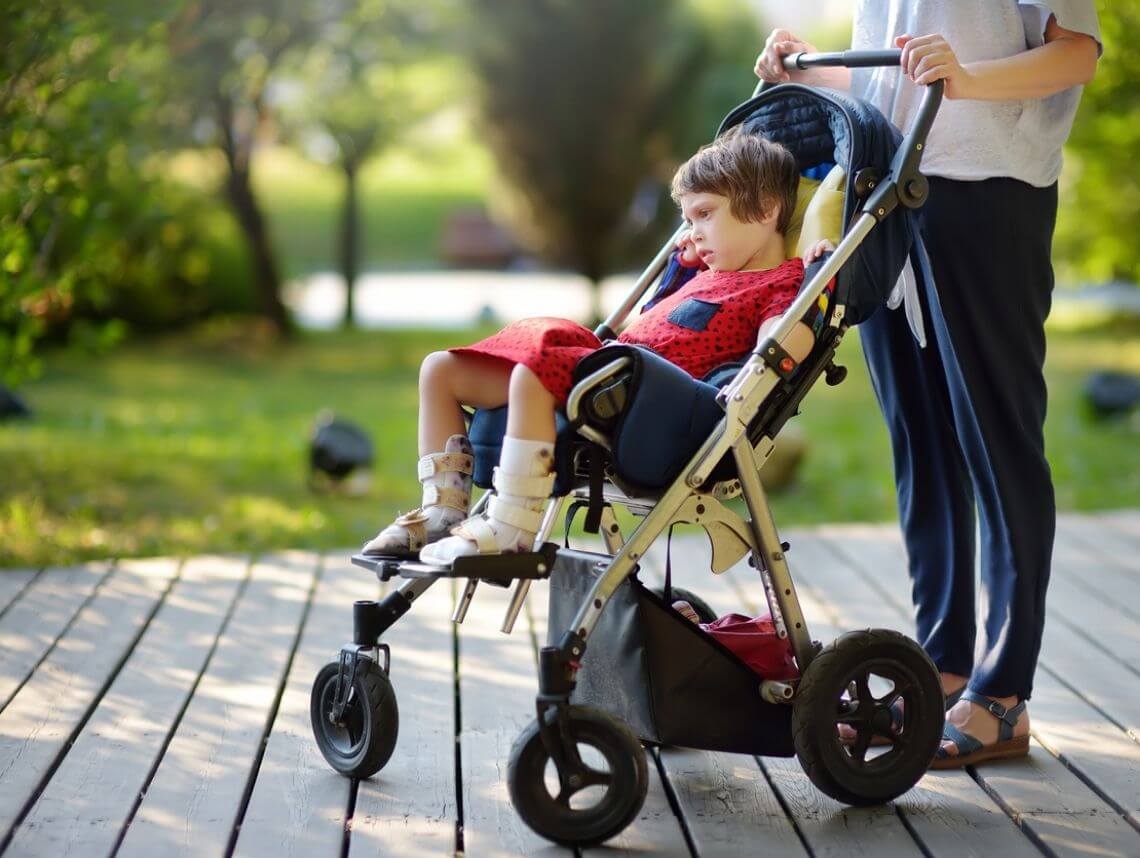Mobility is one of those things that often gets taken for granted — until it is lost. Simple tasks, such as getting out of bed and walking to the kitchen suddenly become impossibilities — or at least difficult enough to require assistance. Such is the case with paraplegia and quadriplegia. However, these conditions are not the same, and each has its own nuances and impacts on a child’s life. What are they? How can you recognize the signs? And, what are the best forms of treatment?
What is paraplegia?
Paraplegia is the loss of sensation and paralysis of the lower body — the pelvis, legs, feet, and toes. It may affect the child’s lower extremities completely, or it may only affect one side of the body (one leg and foot). The condition is caused by injury to the spinal cord, which can be the result of trauma — such as by an accident, violence, or a fall — or by different types of medical conditions, such as cerebral palsy, ALS, spina bifida, or Guillain-Barré syndrome.
Signs of Paraplegia
The symptoms of paraplegia depend on the severity of the injury. They may also vary from day to day. Since the condition doesn’t always affect the person immediately, it’s crucial to be aware of signs so that you can seek emergency medical care. The most common ones include:
- Impaired mobility
- Muscle spasms
- Difficulties going to the bathroom
- Bladder or bowel incontinence
- A loss of sensation in the lower parts of the body
- Excessively high blood pressure
It’s important to note that numbness and paralysis may or may not occur instantly. The spinal cord injury may result in inflammation and bleeding that may last for several days — or even several weeks. This can cause the person to start experiencing symptoms gradually. If you suspect a loved one is developing paraplegia, seek medical care immediately. If the injury is the result of trauma, keep them as still as possible to lower the risk of permanent paralysis.
Treatment Options for Paraplegia
If the paraplegia is partial, the person may still be able to walk to some degree, as long as they use supportive devices, such as a cane or walker. If the person is fully paraplegic, they will need a wheelchair and a catheter for their bowel movements. Their doctor may also recommend physical and occupational therapy, as well as medication to help manage muscle spasms.
In addition, while the person gets used to this new reality, they will require the assistance of caregivers to complete activities of daily living. This includes bathing, personal care, dressing, and eating meals.
What is quadriplegia?
Quadriplegia refers to the paralysis of a person from the neck down — affecting their neck, torso, and both arms and legs. In addition to the physical effects, the person’s inability to move may lead to feelings of isolation and/or depression. Just as with paraplegia, quadriplegia could be complete or incomplete.
Complete quadriplegia results in a full loss of sensation and an ability to move voluntarily. Meanwhile, incomplete quadriplegia may leave the person still being able to retain some of their feeling and motor functions. For example, they may be able to partially move their arms, but not their fingers.
The causes of quadriplegia are the same as with paraplegia. It’s either the result of a traumatic injury or an underlying medical condition.
Signs of Quadriplegia
Since paralysis isn’t always immediately evident, it’s essential to be aware of early signs. Failing to seek medical care in its early stages could lead to permanent paralysis or additional complications, such as blood clots.
The symptoms of quadriplegia will vary depending on the severity of the injury to the nerves of the spinal cords. They may also appear suddenly or manifest gradually. The most common ones include:
- Difficulties maintaining balance
- Respiratory issues
- Muscle spasms
- Loss of bladder and bowel control
- Low blood pressure
- Muscle stiffness or limpness
If you suspect someone may be exhibiting signs of quadriplegia, keep them as still as possible. You can do so by placing objects to hold their neck in place, or by doing so yourself with your own hands. Have someone call 911 immediately.
Treatment Options for Quadriplegia
The treatment options for quadriplegia will depend on the extent of the injury. Some individuals may need a walker or wheelchair and 24/7 monitoring and assistance from a caregiver due to a loss of independence. Other individuals may benefit from undergoing occupational and/or physical therapy. If there’s a possibility of regaining some motor function, a doctor may recommend tendon transfer surgery.
Contact Care Options for Kids for Home Health Care
It can be hard to balance your time between work, home, and caring for a loved one. That’s why our team of skilled professionals at Care Options for Kids is here to help.
Our home health care services offer support in the comfort of your home. We refer loving and competent nurses to provide customized care for families — from a few hours a day to around-the-clock supervision. Contact us directly to speak with a home health care professional or request a free in-home assessment. Together we can determine the best plan of action to keep your loved ones happy and healthy.
If you or a loved one are considering adult or pediatric home health care services, contact the caring staff at Care Options for Kids. Call today at (888) 592-5855.






